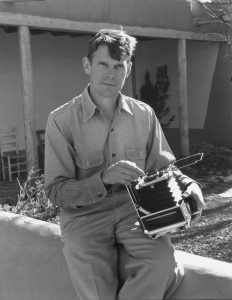Stephen Shore (American, b.1947) is an American photographer well-known for producing deadpan images of banal scenes. He is a pioneer of colored art photography. Shore was born in New York, NY, and is largely a self-taught artist. He became interested in photography at the age of six when he received a darkroom kit of photography as a gift from his uncle. At the age of nine, Shore was given another photography gift; this time the gift was a 35 mm camera, which he used to start taking photographs right away. Soon after that, he received Walker Evans‘ American Photographs and was convinced of his photographic abilities so much so that he presented several of his works to Edward Steichen (American, 1879–1973) of the Museum of Modern Art at the age of 14. His interest in photography continued to grow, and when he met Andy Warhol (American, 1928–1987) at the Factory three years later, he became a regular at the studio, and photographed works and visitors there. At age 24, the photographer held a solo exhibition at The Metropolitan Museum of Art.

Soon after the solo exhibition, Shore embarked on a series of road trips and took several photographs of the American and Canadian landscapes he crisscrossed. The trip from Manhattan to Amarillo in 1972 proved to be eventful and awakened Shore’s interest in color photography. He took a series of photographs of the streets using different types of cameras. Shore received a NEA endowment fund in 1974 and a Guggenheim grant in 1975 that helped him further his work. In 1982, he published Uncommon Places: 50 Unpublished Photographs, a major work in color photography that, together with the works of William Eggleston (American, b. 1939), helped to cement the place of color photography in art. He is believed to have borrowed from the Photorealism works of other artists. Shore also published other books like Essex County and The Velvet Years.




































































































